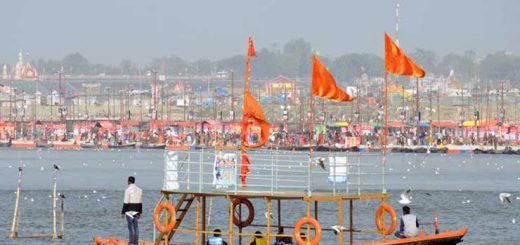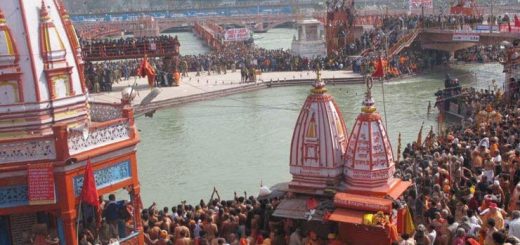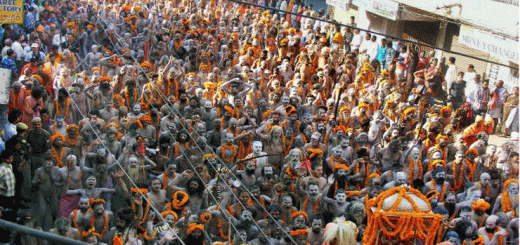Bodhgaya the birth place of Buddhism
The eccentric, town of Bodh Gaya, in Bihar, echoes with a calm ambience, underlined by intense devotion. Dotted with temples and monasteries, this 2,500-year-old birthplace of Buddhism invites travelers from all across the world to soak in its spiritual vibes, follow the footsteps of Lord Buddha and understand his philosophies at the place where he attained nirvana (enlightenment). The city flows with devotees throughout the year, yet it remains suspended in time, as monks in saffron and maroon robes walk around the monuments and temples, their chants and prayers enveloping the surroundings in a cocoon of peace. Even the air of this small town seems to be permeated with peace and serenity, synonymous with Buddhism. Prince Siddhartha, who later became Lord Buddha, is said to have found a quiet retreat under the most hallowed spot here, the Bo or Bodhi tree, where he meditated till the attainment of enlightenment. There are many legends associated with this historic event and it is said that as young Siddhartha settled down to meditate, a young cow-herder named Sujata noticed him and moved by his gaunt appearance, brought him a bowl of kheer (sweet rice pudding).
Not only did the meal give him strength but it is said to have inspired his thoughts on following the Middle Path. The ancient city of Bodhgaya holds a special significance in Hinduism; Gaya is mentioned in the great epics like the Ramayana and the Mahabharata. It is also said to be the place where Lord Rama, with his wife Sita and brother Lakshmana, came to offer pind dan (an offering to ancestors during Hindu funeral rites) for their father Dashratha.
The main attraction of Bodhgya are
Mahabodhi Temple

the Mahabodhi Temple Complex is a UNESCO World Heritage Site, which is about 115 km south of Patna, the capital of Bihar, and 16 km from the district headquarters of Gaya. The Mahabodhi Temple is one of the four holy sites related to the life of Buddha, and this is the place where he attained enlightenment. Standing in the middle of Bodh Gaya town, set amid lush green lawns, the iconic sandstone temple rises to a height of about 52 m. With intricate engravings and arch motifs on its shikhara (tower), it is a spectacular sight. Inside the temple, a gold pianted statue showcases Lord Buddha in his famous bhumisparsha mudra, with one finger touching the earth, asking it to witness his enlightenment. There is a Mayadevi, temple who is Lord Buddha’s mother. The Mahabodhi Temple, destroyed in the 12th century was resurrected in the 14th century and excavated in 1811. It is truly a sight to behold. A pond near the temple that houses blooming lotus flowers is a particular attraction.
Dungeshwari Caves

Also, known as Mahakala Caves, the Dungeshwari Caves are located 12 km north-east of Bodh Gaya. Lord Buddha is believed to have meditated in this place for six years before he went to Bodh Gaya to attain enlightenment. Another cave has a large statue of Lord Buddha, about 6 ft. high, to pay tribute to that phase of Buddha’s life.
There is a popular myth associated with these cave temples and it is said that during his self-humiliations, Gautama (as Buddha was earlier called) became thin because of the food A cow-herder by the name of Sujata was moved by his weak appearance and offered him food and water. Later, Gautama realised that enlightenment cannot be attained by self-abasement and carried on with his journey to Bodh Gaya. One of the cave temples is dedicated to the Hindu goddess, Dungeshwari.
Gaint Buddha

The Great Buddha Statue is an inspiring sight, standing at a height of about 25 m. It is believed to be one of the tallest statues in India and shows Lord Buddha sitting on a lotus in a meditative pose. It was uncovered and consecrated on November 18, 1989, and the ceremony was attended by the 14th Dalai Lama who blessed the site. The statue is a symbol of Bodh Gaya and draws pilgrims from across the world. It is said that the statue took seven years to be built and about 120,000 masons were involved in its construction. The foundation stone of the statue was laid beside the Mahabodhi Temple in 1982. Made of red granite and sandstone blocks, it is a sight to behold.



